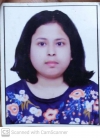1. Understanding the mechanisms of TB pathogenesis. The basic molecular mechanisms that coordinate mycobacterial adaptation and reactivation in the host are still poorly understood. Mycobacterium tuberculosis reprograms its metabolic responses in order to adapt to different host-associated stress conditions such as hypoxia, acidic, and nutrient starvation. This metabolic reprogramming results in slowing down of bacterial metabolism and M. tuberculosis persists in the host in a non-replicating dormant state. Despite our increasing understanding of the metabolic responses, the exact regulatory mechanisms that underlie these adaptations during latency and disease reactivation are still unknown. In the laboratory, we have performed various genetic tools and animal models to delineate their role in the pathogenesis of M. tuberculosis. We have shown that various metabolic enzymes such as secretory tyrosine phosphatases, toxin-antitoxin systems, enzymes involved in inorganic polyphosphate metabolism, itaconate dissimilation pathway enzymes and regulatory proteins (GntR, MarR family) are required for M. tuberculosis to establish disease in guinea pigs.
2. Discovery, Design and Development of novel therapeutics against drug-sensitive and drug-resistant Tuberculosis. In order to tackle the epidemic of drug resistance, there is an urgent need to identify novel drug targets and small molecules that target novel metabolic pathways that are active against drug-resistant bacteria. The identified new scaffolds should possess a novel mechanism of action and, along with current TB drugs, can shorten the duration of therapy and also achieve better treatment outcomes by reducing the emergence of drug-resistant strains. In the laboratory, we have standardized phenotypic, target-based and macrophage-based screens to identify small molecules with antitubercular activity. We have shown that the shortlisted small molecules inhibit the growth of intracellular M. tuberculosis in macrophages and mice. The identified small molecules also show synergy with front line TB drugs and possess activity against drug-resistant bacteria.
3. Discovery, Design and Development of Vaccines.
We have also reported that FOXO3-mediated induction of apoptosis and abrogation of IL-10 secretion enhanced the protection imparted by BCG. We have also evaluated various attenuated mutant strains for their ability to impart protection against M. tuberculosis challenge. We show that immunization of mice or guinea pigs with these strains impart better or comparable protection to BCG post-M. tuberculosis challenge.
1. Priya M, Gupta S, Koundal A, Kapoor S, Tiwari S, Kidwai S, Carvalho LPDS, Thakur KG, Mahajan D, Sharma D, Kumar Y and Singh R*. Itaconate mechanism of action and dissimilation in Mycobacterium tuberculosis. Proceedings of the National Academy of Sciences, 2025, 122(4): e2423114122.
2. Singh N, Chattopadhyay G, Sundaramoorthy NS, Varadarajan R and Singh R*. Understanding the physiological role and interaction network of VapBC35 toxin-antitoxin system from Mycobacterium tuberculosis. Communications Biology, 2025, manuscript accepted.
3. Patel S, Naik L, Rai A, Palit K, Kumar A, Das M, Nayak DK, Dandsena PK, Mishra A, Singh R, Das S and Dhiman R. Diversity of secondary metabolites from marine Streptomyces with potential anti-tubercular activity: a review. Archives of Microbiology, 2025, manuscript accepted.
4. Sharma K, Subramani C, Ganesh K, Sharma A, Basu B, Balyan S, Sharma G, Shouri KA, Deb A, Srivastava M, Chugh S, Sehrawat S, Bharadwaj K, Rout A, Sahoo PK, Saurav S, Motiani R, Singh R, Jain D, Asthana S, Wadhwa R, Vrati S. Withaferin A inhibits Chikungunya virus nsP2 protease and shows antiviral activity in the cell culture and mouse model of virus infection. PLOS Pathogens, 2024, 20(12): e1012816.
5. Bhowmik S, Pathak A, Pandey S, Devnath K, Sett A, Jyoti N, Bhando T, Akhter J, Chugh S, Singh R, Sharma TK, Pathania R. Acenitobacter baumannii represses type VI secretion system through a manganese-dependent small RNA-mediated regulation. mBio, 2024, 16(2): e0302524.
6. Patel S, Naik L, Das M, Nayak DK, Dandsena PK, Mishra A, Kumar A, Dirisala V, Mishra A, Das S, Singh R, Behura A, and Dhiman R. Furamidine-induced autophagy exerts an anti-mycobacterial effect in a SIRT1-pAMPK-FOXO3a-dependent manner by elevation of intracellular Ca2+ level expression. Microbiological Research, 2024, 127976
7. Shende US, Tiwari P, Kidwai S, Singh R* and Chandrashekharappa S*. Synthesis and structural elucidation of novel quaternary pyridinium salt and indolizine derivatives as an anti-tubercular agent: in silico and in vitro screening. Journal of Molecular Structure, 1321, 2025, 139851. * co-corresponding author
8. Sharma A, Singh N, Bhasin M, Tiwari P, Chopra P, Varadarajan R, and Singh R*. Deciphering the role of VapBC13 and VapBC26 toxin-antitoxin systems in the pathophysiology of Mycobacterium tuberculosis. Communications Biology, 7(1), 2024: 1471
9. Sankar J, Chauhan A, Singh R and Mahajan D. Isoniazid-historical development, metabolism associated toxicity and a perspective on its pharmacological improvement. Frontiers in Pharmacology, 15, 2024, 1-10.
10. Gosain TP, Chugh S, Rizvi ZA, Chauhan NK, Kidwai S, Thakur KG, Awasthi A and Singh R*. Mycobacterium tuberculosis strain with deletions in menT3 and menT4 is attenuated and confers protection in mice and guinea pigs. Nature Communications, 15, 2024, 5467.
11. Chugh S, Bahal RK, Dhiman R and Singh R*. Antigen identification strategies and preclinical evaluation models for advancing tuberculosis vaccine development. NPJ vaccines, 2024. 9(1): 57.
12. Chugh S, Tiwari P, Suri C, Gupta SK, Singh P, Bouzeyne R, Kidwai S, Srivastava M, Rameshwaram NR, Kumar Y, Asthana S and Singh R*. Polyphosphate Kinase -1 regulates bacterial and host metabolic pathways involved in pathogenesis of Mycobacterium tuberculosis. Proceedings of the National Academy of Sciences, 2024, 121(2), e2309664121.
13. Singh P, Kumar A, Sharma P, Chugh S, Kumar A, Sharma N, Gupta S, Singh M, Kidwai S, Sankar J, Taneja N, Kumar Y, Dhiman R, Mahajan D and Singh R*. Identification and optimization of pyridine carboxamide scaffold as a drug lead for Mycobacterium tuberculosis. Antimicrobial Agents and Chemotherapy, 2024, 68(2), e00766-23.
14. Gupta V, Sundaramoorthy NS, Bhanwala N, Ambatwar R, Kumar S, Singh R*, Khatik GL*. Design, synthesis, evaluation, and molecular docking study of novel quinoline hydrazone analogues as anti-tubercular agents. Journal of Computational Biophysics and Chemistry, 2024. * co-corresponding author.
15. Bhanwala N, Sundaramoorthy NS, Gollapudi S, Sharma A, Singh R* and Khatik GL*. Design, synthesis, anti-tubercular activity, and computational studies of novel 3-(quinolin-3-yl)-1-phenylprop-2-en-1-one derivatives. Medicinal Chemistry Research, 2024. * co-corresponding author.
16. Tiwari P, Mangubhai GS, Kidwai S, Singh R* and Chandrashekharappa S*. Design, synthesis and characterisation of ethyl 3-benzoyl-7-morpholinoindolizine-1-carboxylate as anti-tubercular agents: In silico screening for possible target identification. Chem Biol Drug Des, 2024, 103 (4): e14512. * co-corresponding author.
17. Naik L, Patel S, Kumar A, Ghosh A, Mishra A, Das M, Nayak DK, Saha S, Mishra A, Singh R, Behura A and Dhiman R. 4-(Benzyloxy)phenol-induced p53 exhibits antimycobacterial response triggering phagosome-lysosome fusion through ROS-dependent intracellular Ca2+ pathway in THp-1 cells. Microbiological Research, May 2024, 282, 127664.
18. Tiwari, P, Mangubhai GS, Kidwai S, Singh R* and Chandrashekharappa S*. Design, synthesis and characterization of novel ethyl 3-benzoyl-7-morpholinoindolizine-1-carboxylate as anti-tubercular agents. Chemical Biology and Drug Design, manuscript accepted. * co-corresponding author
19. Merugu, SR, Mokoena S, Obakachi V, Shaik BB, Kushawaha B, Kushwaha ND, ike BW, Palkar MB, Bonde CG, Chauhan R, Kajee A, Ghai M, Kidwai S, Singh R and Kapoormath R. Novel 4,5-dibromo-N-phenyl-1H-pyrrole-2-carboxamide hybrids as promising DNA gyrase inhibitors: Design, synthesis and antimicrobial evaluation. Journal of Molecular Structure, 2024, 1302.
20. Mishra A, Kumar A, Naik L, Patel S, Das M, Behura A, Mishra A, Bhutia SK, Singh R and Dhiman R. Soybean lectin-triggered IL-6 secretion induces autophagy to kill intracellular mycobacteria through P2RX7 dependent activation of the JAK2/STAT3/Mcl-1 pathway. Cytokine, 2023.
21. Kumar A, Naik L, Patel S, Das M, Nayak DK, Mishra A, Mishra A, Singh R, Behura A and Dhiman R. AC-93253 inhibits intracellular growth of mycobacteria in human macrophages by inducing apoptosis in mitochondrial dependent manner. BBA-General Subjects, 2023.
22. Deep A, Singh L, Kaur J, Velusamy M, Bhardwaj P, Singh R and Thakur KG. Structural insights into DarT toxin neutralization by cognate DarG antitoxin: ss DNA mimicry by DarG C-terminal domain keeps the DarT toxin inhibited. Structure, 2023, 31, 1-10.
23. Manav N, Chavda J, Kidwai S, Singh R, Mori S and Gupta I. Pd(II) dipyrrinato complexes: Synthesis, crystal structure and their antibacterial application. Journal of Porphyrins and Phthalocyanines, 2023, 27, 1-9.
24. Shivaprasad K, Kidwai S, Gopavaram S, Saini MS, Reddy K, Chugh S, Singh R* and Cahnrashekharappa, S*. Design, synthesis and in vitro antitubercular evaluation of novel 7-methoxy pyrollo [1,2-a] quinoline analogues as Cyp21 inhibitors. Journal of Molecular Structure, 2023. 135439. * co-corresponding author
25. Bhanot A, Lunge A, Kumar N, Kidwai S, Singh R, Sundriyal S and Agarwal N. Discovery of small molecule inhibitors of Mycobacterium tuberculosis ClpC1, SAR studies and antimycobacterial evaluation. Results in Chemistry, 2023, 100904.
26. Mundhe P, Kidwai S, Saini MS, Singh HR, Singh R*, and Chandrashekharappa S*. Design, synthesis, characterization and anti-tubercular activity of novel ethyl-3-benzoyl-6,8-difluoroindolizine-1-carboxylate analogues. Molecular target identification and molecular docking studies. Journal of Molecular Structure, 2023. 135359. * co-corresponding author.
27. Mangla N, Singh R, and Agarwal N. HtpG is a metal dependent chaperone which assists DnaK/DnaJ/GrpE chaperone system of Mycobacterium tuberculosis via direct interaction with DnaJ2. Microbiology Spectrum, 2023, Manuscript accepted.
28. Kushwaha B, Kushwaha ND, Priya M, Chandrasekaran B, Obakachi VA, Chauhan R, Kidwai S, Singh R, Ganai AM, Kapoormath R. Novel fluorophenyl tethered thiazole and chalcone analogues as potential anti-tubercular agents: Design, synthesis, biological and in silico evalulations. Journal of Molecular Structure 2023, 1276, 134791.
29. Chauhan NK, Anand A, Sharma A, Dhiman K, Gosain TP, Singh P, Singh P, Khan E, Chattopadhyay G, Kumar A, Sharma D, Ashish, Sharma TK, Singh, R*. Structural and functional characterization of Rv0792c from Mycobacterium tuberculosis: identifying small molecule inhibitor against HutC protein. Microbiology Spectrum, 2022, e01973-22.
30. Tiwari P, Gosain TP, Chugh S, Singh M, Sankhe GD, Arora G, Kidwai S, Agarwal S, Saini DK, and Singh R*. Exopolyphosphatases PPX1 and PPX2 from Mycobacterium tuberculosis regulate dormancy response and pathogenesis. Microb Pathog, Dec 173 (Pt B), 2022: 105885.
31. Gosain TP, Singh M, Singh C, Thakur K, and Singh R*. Disruption of MenT2 toxin impairs the growth of Mycobacterium tuberculosis in guinea pigs. Microbiology, 168 (11) 2022, 001246.
32. Singh P, Rawat S, Agrahari AK, Singh M, Chugh S, Gurcha S, Singh A, Abrahams K, Besra, GS, Asthana S, Rawat DS and Singh R*. NSC19723, a Thiacetazone-like Benzaldehyde Thiosemicarbazone Improves the Efficacy of TB Drugs In Vitro and In Vivo. Microbiology Spectrum, 10 (6), 2022, e02592-22.
33. Ahmed S, Chattopadhyay G, Manjunath K, Bhasin M, Singh N, Rasool M, Das S, Rana V, Khan N, Mitra D, Asok A, Singh R, and Varadarajan R. Combining cysteine scanning with chemical labeling to map protein-protein interactions and infer bound structure in an intrinsically disordered region. Frontiers in Molecular Biosciences, 1077, 2022.
34. Singh N, Sharma N, Singh P, Pandey M, Ilyas M, Sisodiya L, Choudhury T, Gosain, TP, Singh, R, and Atmakuri K. HupB, a nucleoid associated protein is critical for survival of M. tuberculosis under host-mediated stresses and for enhanced tolerance to key first-line antibiotics. Frontiers in Microbiology, 13, 2022.
35. Chaudhary D, Singh A, Marzuki M, Ghosh A, Kidwai S, Gosain TP, Chawla K, Gupta SK, Agarwal N, Saha S, Kumar Y, Thakur KG, Singhal A and Singh R*. Identification of small molecules targeting homoserine acetyl transferase from Mycobacterium tuberculosis and Staphylococcus aureus. Scientific Reports, 12(1), 2022, 1-16.
36. Sindhu G, Kholiya R, Kidwai S, Singh P, Singh R, and Rawat DS. Design and synthesis of benzimidazole derivatives as antimycobacterial agents. J Biochem Mol Toxicol, 36 (9), 2022, e23123.
37. Chattopadhyay G, Bhasin M, Ahmed S, Gosain TP, Ganesan S, Das S, Thakur C, Chandra N, Singh R* and Vardarajan R*. Functional and Biochemical characterization of the MazEF6 Toxin-Antitoxin system of Mycobacterium tuberculosis. Journal of Bacteriology, 204 (4), 2022, e00058-22.
38. Mishra BB, Essafi M, Singh R, Gupta S, and Parihar SP. Repurposed drugs as Immune-Modulators to combat Infectious Diseases. Frontiers in Immunology, 2022, 1-3.
39. Behura A, Das M., Kumar A, Naik L, Mishra A, Manna D, Patel S, Mishra A, Singh R, and Dhiman R. ESAT-6 imepedes IL-18 mediated phagosome lysosome fusion via microRNA-30a upon Calcimycin treatment in mycobacteria infected macrophages. International Immunopharmacology, 101(2), 2021,108319.
40. Sharma A, Sagar K, Chauhan, NK, Gosain TP, Gupta N, Venkataraman B, Singh R*, and Gupta A.* HigB1 toxin in Mycobacterium tuberculosis is upregulated during stress and required to establish infection in guinea pigs. Frontiers in Microbiology, 2021, 3574.
41. Harale B, Kidwai S, Ojha D, Singh M, Chouhan DK, Singh R, Khedkar V. and Rode AB. Synthesis and evaluation of antimycobacterial activity of riboflavin derivative. Bioorg Med Chem Lett, 2021, Sept; 48:128236.
42. Khurana H, Srivastava M, Chaudhary D, Gosain TP, Kumari R, Bean AC, Chugh S, Maiti T, Stephens CE, Asthana S, and Singh R*. Identification of diphenyl furan derivative via high throughput and computational studies as ArgA inhibitor of Mycobacterium tuberculosis. International Journal of Biological Macromolecules, 193, 2021, 1845-1858.
43. Mishra A, Behura A, Kumar A, Naik L, Swain A, Das M, Sarangi SS, Dokania P, Dirisala VR, Bhutia SK, Mishra A, Singh R and Dhiman R. P2X7 receptor in multifaceted cellular signalling and its relevance as a potential therapeutic target in different diseases. European Journal of Pharmacology, 906, 2021, 174235, 1-23.
44. Bouzeyne R, Chugh S, Gosain TP, Barbouche MR, Haoues M, Rao KVS, Essafi M, and Singh R. Co-administration of anticancer candidate MK-2206 enhances the efficacy of BCG vaccine against Mycobacterium tuberculosis in mice and guinea pigs. Frontiers in Immunology, 12, 2021, 1-18.
45. Gagandeep, Singh M, Kidwai S, Das US, Velpandian T, Singh R, and Rawat DS. Monocarbonyl curcumonoids as antituberculosis agents with their moderate in-vitro metabolic stability on human liver microsomes. Journal of Biomolecular and Molecular Toxicology, 35(6), 2021, 1-10.
46. Singh M, Schiavone N, Papucci L, Maan P, Kaur J, Singh G, Nandi U, Nosi D, Tani A, Khuller G, Priya M, Singh R, and Kaur IP. Streptomycin sulphate loaded solid lipid nanoparticles show enhanced update in macrophages, lower MIC in Mycobacterium and improved oral bioavailability. European Journal of Pharmaceutics and Biopharmaceutics, 160, 2021, 100-124.
47. Mishra A, Behura A, Kumar A, Ghosh B, Naik L, Mawatlal S, Mohanty SS, Mishra A, Saha S, Bhutia SK, Singh R, and Dhiman R. Soybean lectin induces autophagy through P2RX7 dependent activation of MF-kB-ROS pathway to kill intracellular mycobacteria. Biochimica et Biophysica Acta 1865 (2), 2021, 1-15.
48. Kumar SM, Singh R, Pandey S, Gayathri S, Kanjo K, Siddeeqi S, Khan MS, Kalita P, Girish N, Upadhyaya A, Reddy P, Pramanick I, Bhasin M, Mani S, Bhattacharyya S, Joseph J, Karthika T, Victor SR, Dutta S, Singh R, Nadig G, and Varadarajan R. Design of a highly thermotolerant, immunogenic SARS-CoV2 spike fragment. Journal of Biological Chemistry 296, 2021, 1- 14.
49. Jadhav P, Sinha VK, Chugh S, Kotyada C, Bachhav D, Singh R, Rothweller U and Singh M. 2.09Å resolution structure of E. coli HigBA toxin-antitoxin complex reveals an ordered DNA-binding domain and intrinsic dynamics in antitoxin. Biochemical Journal477(20), 2020, 4001-4019.
50. Sharma A, Chattopadhyay G, Chopra P, Bhasin M, Thakur C, Agarwal S, Ahmed S, Chandra N, Varadarajan R, and Singh R. VapC21 toxin contributes to drug-tolerance and interacts with Non-cognate VapB32 antitoxin in Mycobacterium tuberculosis. Frontiers in Microbiolgy 11, 2020, 1-15.
51. Singh P, Khurana H, Yadav SP, Dhiman K, Singh P, Ashish, Singh R, and Sharma D. Biochemical characterization of ClpB protein from Mycobacterium tuberculosis and identification of its small molecule inhibitors. International Journal of Biological Macromolecules 165 (Pt A), 2020, 375-387
52. Meena CL, Singh P, Shailiwal, RP, Kumar V, Kumar A, Tiwari AK, Asthana S, Singh R* and Mahajan D*. Synthesis and evaluation of thiophene based small molecules as potent inhibitors of Mycobacterium tuberculosis. European Journal of Medicinal Chemistry, 208, 2020, 112772. * co-corresponding author.
53. Agarwal S, Sharma A, Bouzeyen R, Deep A, Sharma H, Mangalaparthu K, Datta KK, Kidwai S, Gowda H, Varadarajan R, Sharma RD, Thakur KG and Singh R. VapBC22 toxin-antitoxin system from Mycobacterium tuberculosis is required for pathogenesis and modulation of host immune response. Science Advances 2020, 1-15.
54. Arora G, Gagandeep, Behura A, Gosain TP, Shaliwal RP, Kidwai S, Singh P, Kandi SK, Dhiman R, Rawat DS, and Singh R. NSC 18725, a pyrazole derivative inhibits growth of intracellular Mycobacterium tuberculosis by induction of autophagy. Frontiers in Microbiology 10, 2020, 1-13.
55. Bouzeyen R, Haoues M, Barbouche MR, Singh R, and Essafi M. FOXO3 transcription factor regulated IL-10 expression in mycobacteria-infected macrophages, tuning their polarization and the subsequent adaptive immune response. Frontiers in Immunology 10, 2019, 2922.
56. Pierson E, Haufroid M, Gosian TP, Chopra P, Singh R, and Wouter J. Identification and repurposing of trisubstituted harmine derivatives as novel inhibitors of Mycobacterium tuberculosis phosphoserine phosphatase. Molecules 25 (2), 2020, 1-13.
57. Tandon H, Sharma A, Wadhwa S, Varadarajan R, Singh R, Srinivasan N, and Sandhya S. Bioinformatic and mutational studies of related toxin-antitoxin pairs in M. tuberculosis predict and identify key functional residues. Journal of Biological Chemistry 294 (23), 2019, 9048-9063.
58. Maurya SS, Gosain TP, Kidwai S, Singh R, and Rawat DS. Synthesis of 1,3,4-oxadiazole and imidazo [1,2-1] pyridine based molecular hybrids and their in vitro antituberculosis and cytotoxicity studies. Indian Journal of Chemistry 58B, 2019, 1005-1018.
59. Kidwai S, Bouzeyen R, Chakraborti S, Khare N, Das S, Gosain TP, Behura A, Meena CL, Dhiman R, Essafi M, Bajaj A, Saini DK, Srinivasan N, Mahajan D, and Singh R. NU-6027 Inhibits Growth of Mycobacterium tuberculosis by Targeting Protein Kinase D and Protein Kinase G. Antimicrobial Agents and Chemotherapy 63 (9), 2019, e00996-19.
60. Banerjee SK, Lata S, Sharma AK, Bagchi S, Kumar M, Sahu SK, Sarkar D, Gupta P, Jana K, Gupta UD, Singh R, Saha S, Basu J, and Kundu, M. The sensor kinase MtrB of Mycobacterium tuberculosis regulates hypoxic survival and establishment of infection. Journal of Biological Chemistry 294 (52), 2019; 19862-19876.
61. Behura A, Mishra A, Chugh S, Mawatwal S, Kumar A, Manna D, Mishra A, Singh R, and Dhiman R. ESAT-6 modulates Calcimycin-induced autophagy through microRNA-30a in mycobacteria infected macrophages. Journal of Infection 79(2), 2019; 139-152.
62. Gupta A, Das PN, Bouzeyen R, Karmakar SP, Singh R, Bairagi N, and Chatterjee S. (2019) Restoration of cytosolic calcium inhibits Mycobacterium tuberculosis intracellular growth: Theoretical evidence and experimental observation. Journal of Theoretical Biology472, 2019, 110-123.
63. Sitwala ND, Vyas VK, Gedia P, Patel K, Bouzeyen R, Kidwai S, Singh R, and Ghate MD. 3D QSAR-based design and liquid phase combinatorial synthesis of 1,2-disubstituted benzimidazole-5-carboxylic acid and 3-substituted-5H-benzimidazo[1,2-d][1,4]benzodiazepin-6(7H)-one derivatives as anti-mycobacterial agents. MedChemComm 10, 2019, 817-827.
64. Tandon H, Sharma A, Sandhya S, Srinivasan N and Singh R. Mycobacterium tuberculosis Rv0366c-Rv0367c encodes a non-canonical PezAT-like toxin-antitoxin pair. Scientific Reports 9, 2019, 1-19.
65. Arora G, Chaudhary D, Kidwai S, Sharma D and Singh R. CitE enzymes are essential to establish Mycobacterium tuberculosisinfection in macrophages and guinea pigs. Frontiers in Cellular and Infection Microbiology 8, 2018, 1-15.
66. Deep A, Tiwari P, Agarwal S, Kaundal S, Kidwai S, Singh R* and Thakur KG*. Structural, functional and biological insights into the role of Mycobacterium tuberculosis VapBC11 toxin-antitoxin system: targeting a tRNase to tackle mycobacterial adaptation. Nucleic acids Research, 21, 2018, 11639-11655. * co-corresponding author.
67. Dhiman R, and Singh R. Recent advances for identification of new scaffolds and drug targets for Mycobacterium tuberculosis. IUBMB life 70, 2018, 905-916.
68. Mawatwal S, Behura A., Mishra A., Singh R, and Dhiman R. Calcimycin induced IL-12 production inhibits intracellular mycobacterial growth by enhancing autophagy. Cytokine 111, 2018, 1-12.
69. Jha B, Kumar D, Sharma A, Dwivedy A, Singh R, and Biswal BK. Identification and structural characterization of a histidinol phosphate phosphatase from Mycobacterium tuberculosis. Journal of Biological Chemistry 293 (26), 2018, 10102-10118.
70. Negi B, Poonan P, Ansari M F, Kumar D, Aggarwal S, Singh R, Azam A and Rawat DS. Synthesis, antiamoebic activity and docking studies of metronidazole-triazole-styryl hybrids. European journal of medicinal chemistry 150, 2018, 633-41.
71. Agarwal S, Tiwari P, Deep A, Kidwai S, Gupta S, Thakur KG and Singh R. System wide analysis reveals differential regulation and in vivo essentiality of VapBC TA systems from Mycobacterium tuberculosis. The Journal of Infectious Diseases 217 (11), 2018, 1809-1820.
72. Deep A, Kaundal S, Agarwal S, Singh R and Thakur KG. Crystal structure of Mycobacterium tuberculosis VapC20 toxin, and its interaction with cognate antitoxin, VapB20 suggests a model for toxin-antitoxin assembly. FEBS Journal, 284, 2017, 4066-4082.
73. Mawatwal S, Behura A, Ghosh A, Kidwai S, Mishra A, Deep A, Agarwal S, Saha S, Singh R and Dhiman R. Calcimycin mediates mycobacterial killing by inducing intracellular calcium regulated autophagy in a P2XR7 dependent manner. Biochemical Biophysical Acta 1861 (12), 2017, 3190-3200.
74. Kidwai S, Park CY, Mawatwal S, Tiwari P, Jung MG, Gosain TP, Kumar P, Alland D, Kumar S, Bajaj A, Hwang YK, Song CS, Dhiman R, Lee IY and Singh R. The dual mechanism of action of 5-Nitro-1,10-phenanthroline against Mycobacterium tuberculosis. Antimicrobial Agents and Chemotherapy 61 (11), 2017, 1-18.
75. Singh M, Tiwari P, Arora G, Agarwal S, Kidwai S and Singh R. Establishing Virulence associated Polyphosphate Kinase 2 as a drug target for Mycobacterium tuberculosis. Scientific Reports; 6, 2016, 1-15.
76. Banerjee SK, Kumar M, Alokam R, Sharma AK, Chatterjee A, Kumar R, Sahu SK, Jana K, Singh R, Yogeeswari P, Sriram D, Basu J, Kundu M. Targeting multiple response regulators of Mycobacterium tuberculosis auguments the host immune response to infection. Scientific Reports 6, 2016, 1-13.
77. Negi B, Kumar D, Kumbukgolla W, Jayaweera S, Ponnan P, Singh R, Agarwal S, and Rawat, DS. Antimethicillin resistant Staphylococcus aureus activity synergism with oxacillin and molecular docking studies of metronidazole-triazole derviatives. European Journal of Medicinal Chemistry 115, 2016, 426-37.
78. Kang YG, Park CY, Shin H, Singh R, Arora G, Yu CH and Lee IY. Synthesis and antitubercular activity of 2-nitroimidazooxazines with modification at the C-7 position as PA-824 analogs. Bioorganic and Medicinal Chemistry Letters 25 (17), 2015, 365-73.
79. Tiwari P, Arora G, Singh M, Kidwai S, Narayan O, and Singh R. MazF ribonucleases promote Mycobacterium tuberculosis drug tolerance and virulence in guinea pigs. Nature Communications 6(1), 2015, 1-13.
80. Kumar D, Khare G, Beena, Kidwai S, Tyagi AK, Singh R and Rawat DS. Novel isoniazid-amidoether derivatives: synthesis, characterization and antimycobacterial activity evaluation. MedChemComm 6, 2015, 131-137.
81. Bansal S, Singh M, Kidwai S, Bhargava P, Singh A, Sreekanth V, Singh R* and Bajaj A*. Bile acid amphiphiles with tunable head groups as highly selective anti-tubercular agents. MedChemComm 5, 2014, 1761-1768. * co-corresponding author.
82. Lakshiminarayana SB, Boshoff HI, Cherian J, Ravindran S, GohA, Jiricek J, Nanjudappa M, Nayyar A, Gurumurthy M, Singh R, Dick T, Blasco F, Barry CE, Ho PC, and Manjunatha UM. Pharmacokinetics-pharmacodynamics analysis of bicyclic -4-nitroimidazoles analogs in murine model of tuberculosis. pLOS One 9(8), 2014,e105222.
83. Arora G, Tiwari P, Mandal RS, Gupta A, Sharma D, Saha S and Singh R*. High through put screen identifies small molecule inhibitors specific for Mycobacterium tuberculosis phosphoserine phosphatase. Journal of Biological Chemistry, 289 (36), 2014, 25149-25165.
84. Gupta M, Sajid A, Sharma K, Ghosh S, Arora G, Singh R, Nagaraja V, Tandon V and Singh Y. HupB, a nucleoid associated protein of Mycobacterium tuberculosis is modified by Serine/Threonine protein kinases in vivo. Journal of Bacteriology 196, 2014, 2646-2657.
85. Kumar D, Beena, Khare G, Kidwai S, Tyagi AK, Singh R and Rawat DS. Synthesis of 1,2,3 triazole derivatives of isoniazid and their in vitro and in vivo anti-mycobacterial activity evaluation. European Journal of Medicinal Chemistry 81, 2014, 301 - 313.
86. Chauhan P, Reddy PV, Singh R, Jaisinghani N, Gandotra S and Tyagi AK. Secretory phosphatases deficient mutant of Mycobacterium tuberculosis imparts protection at the primary site of infection in guinea pigs. pLOS One 8 (10), 2013, e77930.
87. Kumar N, Kapoor E, Singh R, Kidwai S, Kumbukgolla W, Bhagat S and Rawat DS. Synthesis and antibacterial/antitubercular activity evaluation of symmetrical trans-cyclohexane-1,4-diamine derivatives. Indian Journal of Chemistry 52B, 2013, 1441 – 1450.
88. Singh R, Singh M, Arora G, Kumar S, Tiwari P, Kidwai S. Polyphosphate deficiency in mycobacterium tuberculosis is associated with enhanced drug susceptibility and impaired growth in guinea pigs. Journal of Bacteriology, 195, 2013, 2839 - 51.
89. Beena, Joshi S, Kumar N, Kidwai S, Singh R, Rawat DS. Synthesis and antitubercular activity evaluation of novel unsymmetrical cyclohexane-1,2-diamine derivatives. ARCH PHARM 345 (11), 2012, 896-901.
90. Gurumurthy M, Mukherjee T, Dowd CS, Singh R, Niyomrattanakit P, Tay JA, Nayyar A, Lee YS, Cherian J, Boshoff HI, Dick T, Barry CE and Manjunatha UH. Substrate Specificity of the Deazaflavin Dependent Nitroreductase (Ddn) from Mycobacterium tuberculosis is responsible for the Bioreductive activation of Bicyclic Nitroimidazoles. FEBS Journal, 279 (1) 2012,113-125.
91. Cherian J, Choi I, Nayyar A, Manjunatha UH, Lee YS, Boshoff HI, Singh R, Ha YH, Goodwin M, Lakshminarayana SB, Niyomrattanakit P, Jiricek J, Ravindran S, Dick T, Keller TH, Dartois V and Barry CE. Structure-activity relationships of antitubercular nitroimidazoles. 3. Exploration of the linker and lipophilic tail of the ((s)-2-nitro-6,7, dihydro-5H-imidazo [2,1-b][1,3]oxazin-6-yl)-(4-trifluoromethoxybenzyle) amine (6-amino-PA-824). Journal of Medicinal Chemistry 54 (16), 2011, 5639-59.
92. Singh R, Barry CE 3rd and Boshoff HI. The three RelE homologs of Mycobacterium tuberculosis have individual, drug-specific effects on bacterial antibiotic tolerance. Journal of Bacteriology 192 (5), 2010, 1279 – 91.
93. Singh R, Manjunatha UH, Boshoff HI, Ha YH, Niyomrattanakit P, Ledwidge R, Dowd CS, Lee IY, Kim P, Zhang L, Kang S, Keller TH, Jiricek J and Barry CE, 3rd. PA-824 Kills Nonreplicating Mycobacterium tuberculosis by Intracellular NO Release. Science, 322, 2008, 1392 - 95.
94. Kim P, Zhang L, Manjunatha UH, Singh R, Patel S, Jiricek J, Keller TH, Boshoff HI, Barry CE 3rd and Dowd CS. Structure-activity relationships of antitubercular nitroimidazoles. I. Structural features associated with aerobic and anaerobic activity of 4- and 5-nitroimidazoles. Journal of Medicinal Chemistry, 52 (5), 2009, 1317-28.
95. Kim P, Kang S, Boshoff HI, Jiricek J, Collins M, Singh R, Manjunath UH, Zhang L, Goodwin M, Keller TH, Dowd CS and Barry CE 3rd. Structure-activity relationships of antitubercular nitroimidazoles II. Determinants of aerobic activity and QSAR modeling. Journal of Medicinal Chemistry, 52 (5), 2009, 1329-44.
96. Jain, R, Dey B, Dhar N, Rao V, Singh R, Gupta UD, Katoch VM, Ramanathan VD and Tyagi AK. Modulation of Cytokine Milieu in Lung by Recombinant BCG Over-expressing Ag85C Confers Enhanced and Long-lasting Protection against Tuberculosis. PLoS ONE 3(12), 2008, e3869.
97. Khera A, Singh R, Shakila H, Rao V, Dhar N, Parmasivan, CN, Ramanathan, VD and Tyagi, AK Elicitation of efficient, protective immune responses by using DNA vaccines against tuberculosis. Vaccine, 23 (48-49), 2005, 5655 - 65.
98. Singh R, Singh A and Tyagi AK. Deciphering the genes associated with pathogenesis of Mycobacterium tuberculosis. Tuberculosis 85 (5-6), 2005, 325 - 35.
99. Rao V, Dhar N, Shakila H, Singh R, Khera A, Parmasivan CN, Narayanan PR, Ramanathan VD and Tyagi AK Over-expression of the 19kDa lipoprotein of Mycobacterium tuberculosis obliterates the protective efficacy of BCG by polarizing the host immune responses to the Th2 phenotype. Scandinavian Journal of Immunology, 61(5), 2005, 210-17.
100.Chopra P, Koduri H, Singh R, Koul A, Ghildiyal M, Sharma K, Tyagi AK and Singh Y. Nucleoside diphosphate kinase of Mycobacterium tuberculosis acts as GTPase activating protein for Rho-GTPases. FEBS Letters, 571 (1–3), 2004, 212–16.
101.Singh R., Rao V, Shakila H, Gupta R, Khera A, Dhar N, Singh A, Koul A, Singh Y, Naseema M, Narayanan PR, Paramasivan CN, Ramanathan VD and Tyagi AK. Disruption of mptpB impairs the ability of Mycobacterium tuberculosis to survive in guinea pigs. Molecular Microbiology, 50 (3), 2003, 751 – 62.
102.Chopra P, Singh B, Singh R, Vohra R, Koul A, Meena LS, Koduri H, Ghildiyal M, Deol P, Das TK, Tyagi AK and Singh Y. Phosphoprotein phosphatase of Mycobacterium tuberculosis dephosphorylates serine-threonine kinases PknA and PknB. Biochemical Biophysical Research Communications, 311(1), 2003, 112–20.
-
Singh R, Kumar P and Tahlan T. Drugs against Mycobacterium tuberculosis. Book Chapter in Drug discovery targeting drug-resistant bacteria. Elsevier Press. 2020.
-
Anil K Tyagi, Ramandeep Singh and Vibha Gupta. Role of Mycobacterial Kinases and Phosphatases in bacterial growth and pathogenesis in “The Mycobacterial Cell Envelope, an overview” edited by Dr. Mamadou Daffe and Dr. Jean Marc Reyrat, 2008.
-
Helena I Boshoff, Ramandeep Singh and Clifton E. Barry III. Virulence and Persistence mechanisms of Mycobacterium tuberculosis, in Handbook of Tuberculosis: Molecular Biology and Biochemistry edited by Dr. Stefan H. E. Kaufmann and Dr. Eric J Rubin, 2008.
1. Mutants of mycobacteria and process there off (US Patent).
2. Recombinant BCG- Ag85C based immunization against Mycobacterium (Indian patent).
3. 1. 7-substituted 2-nitro 6,7- dihydroimidazo [2,1-b][1,3] oxazine derivatives of their optical isomers, pharmaceutical composition containing the same as an active ingredient (Korean Patent).
4. 5-Nitro-1,10, phenanthroline derivatives and pharmaceutical composition for prevention and treatment of tuberculosis containing the same (Korean Patent).
5. Novel pyridine carboxamide compounds with anti-tubercular activity (Indian Patent filed).
- Fellows award for Research Excellence by the National Institutes of Health 2007
- Ramalingaswami Fellowship from Department of Biotechnology; 2010-2015
- National Bioscience Award for career development from Department of Biotechnology; 2015
- DBT-Wellcome Trust India Alliance Senior Research Fellowship, 2020 – 2025.
- Fellowship of the National Academy of Sciences, 2024.

MR. SAQIB KIDWAI
TECHNICAL OFFICER-II

DR. MADHU PAREEK
TECHNICAL OFFICER-II

MS. MANISHA PRIYA
PH.D STUDENT

MR. ARUN SHARMA
PH.D STUDENT

MS. NEHA KHAN
PH.D STUDENT

MR. IMRAN AHMAD
PH.D STUDENT

MS. JUHI
PH.D STUDENT

MS. NIRANJANA SRI S.
MKB-YRFP FELLOW

DR. NISHA
JUNIOR RESEARCH SCIENTIST

MR. KUNJKUMAR PRAJAPATI
PROJECT ASSOCIATE-I

DR. SHIKHA SINGH
SERB RAMANUJAN FELLOW

